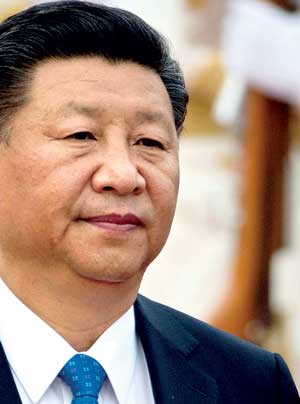Reply To:
Name - Reply Comment
Last Updated : 2024-04-27 00:40:00
 China’s National Party Congress, the sixth since modern China started to take shape in 1992, could mark a break from the past three leadership changeover cycles. Specifically, it could result in an extension of President Xi Jinping’s control over the party beyond the normal two five-year terms. Such an outcome would imply continuity and reaffirm the current trajectory of renewal in the Chinese economy.
China’s National Party Congress, the sixth since modern China started to take shape in 1992, could mark a break from the past three leadership changeover cycles. Specifically, it could result in an extension of President Xi Jinping’s control over the party beyond the normal two five-year terms. Such an outcome would imply continuity and reaffirm the current trajectory of renewal in the Chinese economy.

With the exception of the Global Financial Crisis-induced credit expansion in the old economy sectors, China’s focus over the past 10 years has been on building new champions in technology, transportation and consumer services. This marked a change from the prior generation of leadership which emphasised economic modernisation, with a focus on domestic champions in finance, materials and energy.
China has experienced continued growth in debt ratios over the past 10 years, with the Institute of International Finance estimating the debt-to-gross domestic product (GDP) ratio reached 300 percent in mid-2007. This has coincided with a decline in the marginal return on each additional unit of debt as the economy has increased in size and the population has aged. The debt build-up has been primarily driven by companies in the old economy sectors, including some state-owned enterprises which are deemed as too big to fail.
Nevertheless, in contrast to economies in Japan, Europe and to a lesser extent the US, new growth drivers in China have emerged in the technology, transportation and consumer services sectors. The marginal return on investment in these sectors is increasing and they don’t have the same addiction to debt.
China’s technology leaders
If ‘big data’ generates competitive advantage for businesses in the first half of the 21st century, Chinese technology leaders have a unique advantage. China’s vast population has smartphone penetration and social media usage levels to give these companies a vast stream of data to analyse.
These technology leaders have access to the data to feed their algorithms to identify trends as they develop: tailor-making value-added solutions for their customers in the sharing economy, pioneering new forms of credit scoring and targeted video advertising.
China’s 3.0 generation of leadership understands the importance of creating new growth drivers to take over from the old economy behemoths. This was most recently reflected in the implicit approval of foreign investment in the technology sectors, even as authorities clamped down against foreign direct investment by opaque domestic conglomerates.
While China’s domestic population of 1.4 billion consumers is attractive, it is also protected, which could result in leading companies in the technology, transportation and consumer services sectors resting on their laurels. China’s One-Belt-One-Road (OBOR) initiative – which involves large-scale development of infrastructure along China’s centuries-old trade routes - is part of the solution to ensure this does not happen. For China’s companies in these sectors, OBOR offers a road map to tap into millennial consumers across Asia who have yet to commit to an ecosystem. Chinese companies have grabbed the market share in the instant messaging, e-commerce and sharing economy across South and Southeast Asia. These markets, combined, offer a population size that is even bigger than China’s home market.
For international investors looking for the next big opportunity, China’s 2.0 companies offer plenty. Fortuitously for them, the pivot towards the new growth drivers guided by China’s 3.0 leaders takes place at a time when there are more opportunities to tap into them compared to prior phases of growth in China. During the 1990s growth spurt, foreign investors did not have easy access to rapidly growing companies in the finance, materials and energy sectors as many were unlisted. Today, there are a broad range of listed companies in the technology, transportation and consumer services sectors accessible to investors based in the US, UK and Hong Kong.
(Clive McDonnell is Head of Equity Strategy at Standard Chartered Private Bank)

Add comment
Comments will be edited (grammar, spelling and slang) and authorized at the discretion of Daily Mirror online. The website also has the right not to publish selected comments.
Reply To:
Name - Reply Comment
US authorities are currently reviewing the manifest of every cargo aboard MV
On March 26, a couple arriving from Thailand was arrested with 88 live animal
According to villagers from Naula-Moragolla out of 105 families 80 can afford
Is the situation in Sri Lanka so grim that locals harbour hope that they coul